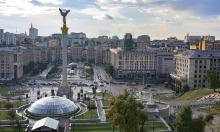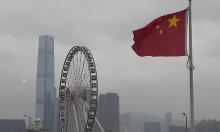The Significance of America's Participation in WWII
The story of how Roosevelt helped Stalin
On November 6th, 1940, Franklin D. Roosevelt became the first president in the history of the USA who was elected for a third presidential term. Very soon thereafter, Roosevelt declared that the USA totally supported England in the struggle against Adolf Hitler. Franklin D. Roosevelt said that the United States was ready to lend and lease everything necessary to England to wage the war. That was the way the "garden hose" idea appeared.
However, the USA had a law of neutrality that cut England off from the direct support on the part of America. On the other hand, the owners of the New World were well aware of the disastrous situation in which England found itself in at that period of time. Great Britain had nothing to wage war with - the British were experiencing a very great lack of arms, while its currency reserve was exhausted. It was totally inadmissible for American leaders to let Germany take the predominant position in the Eurasian region. The USA found a rather clever way out of the situation.
Having taken a short break from the election race, Roosevelt returned to Washington on December 16th, 1940. The next day, the president arranged a press briefing at which he said that Britain's success in its defensive ability was the best defense for the United States. He compared the USA lending England guns and ships to lending your neighbor a garden hose while his house was on fire: you lend your neighbor what he needs in an emergency, and worry about being repaid later.
That was a very bright example of American PR: the "defensive" idea was put forward in a short, figurative and convincing way.
The US Congress approved the Lend-Lease Law on March 11th, 1941. The law gave the president the prerogative to sell, lend and lease the defense technology or the military information to the government of any country if its defense against aggression is vital for the defense of the United States. An agreement with the Soviet Union was signed on June 11th, 1942.
It is worth mentioning here that Franklin Roosevelt's "garden hose" helped to extinguish the fire of the war. Yet, the "garden hose" was more of a "gas station hose" at the end of 1940 and in the beginning of 1941: the hose added more fuel to the fire of the grand battle.
Hitler was well aware that the Lend-Lease Law virtually implied that the USA had declared war on Germany. Hitler believed that it was an attempt to make the Third Reich’s Fuhrer declare war on the States. Hitler did not intend to do that, though. He wanted to get Stalin out of the game, for Churchill and Roosevelt had big hopes about the Soviet leader. On December 18th, 1940, the Fuhrer approved Operation Barbarossa Plan. In a message dated 21 June, 1941, to the leader of the Italian fascists, Benito Mussolini, Hitler wrote that England's hopes of winning the war were based on two factors only - America and Russia. Adolf Hitler knew that Germany had no opportunity of getting rid of the States, although Germany could achieve such an objective as far as Russia was concerned. It was the growing American and English power that made Adolf Hitler attack the Soviet Union.
That was definitely a suicidal decision to make, but Hitler did not have any other choice. Stalin's tragic mistake was that he failed to evaluate the real situation until the very beginning of the war on June 22, 1941. Stalin never planned for the war, which made the USSR suffer immense losses.
In the autumn of 1941 the German army occupied Ukraine, Belarus, Moldova, the Baltic republics and several regions in Russia. The fascists approached Moscow. On September 22 - October 1, the USSR, the USA and Great Britain agreed upon the delivery of 400 planes, 500 tanks, anti-aircraft, anti-tank arms, ammunition, aluminium, and other strategic materials to the USSR on a monthly basis. Roosevelt's "garden hose" started working nine months before the lend-lease agreement was officially signed between America and the Soviet Union.
During the WWII years, the USA delivered defense technology in the sum of $46 billion to the countries of the anti-Hitler coalition. The costs made up 13 percent of America's defense spending. The lion's share of deliveries was given to England - $30.3 billion. The Soviet Union received defense technology in the sum of $9.8 billion, France $1,4 billion and China $631 million. In total, the USA supplied arms to 42 countries.
The USSR received hundreds of thousands of military vehicles and motorbikes. Lack of fuel was ameliorated with deliveries of 2.5 million tons of petroleum products. The profusion of Roosevelt's "garden hose" provided Stalin with 595 ships, including 28 frigates, 105 submarines, 77 trawlers, 22 torpedo boats, 140 anti-submarine vessels and others. The Soviet air force received 4,952 Aerocobra and 2,410 Kingcobra fighter jets. Soviet pilot Alexander Pokryshkin fought with Hitler's Luftwaffe aces in Aerocobra planes, which made him a Hero of the Soviet Union hero three times over.
The lend-lease agreement supplied the USSR with 2,7 thousand A-20 and 861 B-25 bomber planes. Soviet tank divisions received 7,056 tanks, 8,218 anti-aircraft emplacements, 131,600 machine guns and other arms.
Soviet propaganda tried to diminish the importance of the American help. Back in those years, it was said that the Soviet Union had produced 30,000 tanks and 40,000 planes since the middle of 1943. Well, as a matter of fact, this was true. However, one has to take into consideration the fact that lend and lease deliveries were made to the USSR during the most difficult period of the war - during the second half of 1942. In addition, the USSR would not have been capable of producing its arms without the lend-lease agreement: The USA shipped 2.3 million tons of steel to the USSR during the WWII years. That volume of steel was enough for the production of 70,000 T-34 tanks. Aluminum was received in the volume of 229,000 tons, which helped the Soviet aviation and tank industries to run for two years. One has to mention food deliveries as well: 3.8 million tons of tinned pork, sausages, butter, chocolate, egg powder and so on. The lend-lease agreement provided orderlies with 423,000 telephones and tens of thousands of wireless stations. Deliveries also included oil distillation equipment, field bakeries, tents, parachutes, and so on and so forth. The Soviet Union also received 15 million pairs of army boots.
The help was delivered to the USSR via Iran and major Soviet sea ports. About 3,000 transport vessels arrived at the ports of Murmansk, Arkhangelsk and Vladivostok, and delivered 1.3 million tons of cargo. It would be incorrect to diminish the significance of such all-embracing help from the New World as a serious factor that assisted in the victorious ending of the war.
Historians and politicians keep on arguing about the results and lessons of WWII. The basic results of the war are known: the war was lost by the two major participants inthe "grand political game" of 1939-1940 - both Hitler and Stalin. Of course, the Soviet leader defeated Hitler, although it then resulted in the ideological crisis and, eventually, in the tragic collapse of the totalitarian superpower - the USSR. It is worth mentioning here that the debt of the Soviet Union - $722 million - for the lend-lease contract has not been completely paid to the States yet.
Stanislav Korolev,
WWII veteran
Subscribe to Pravda.Ru Telegram channel, Facebook, RSS!




